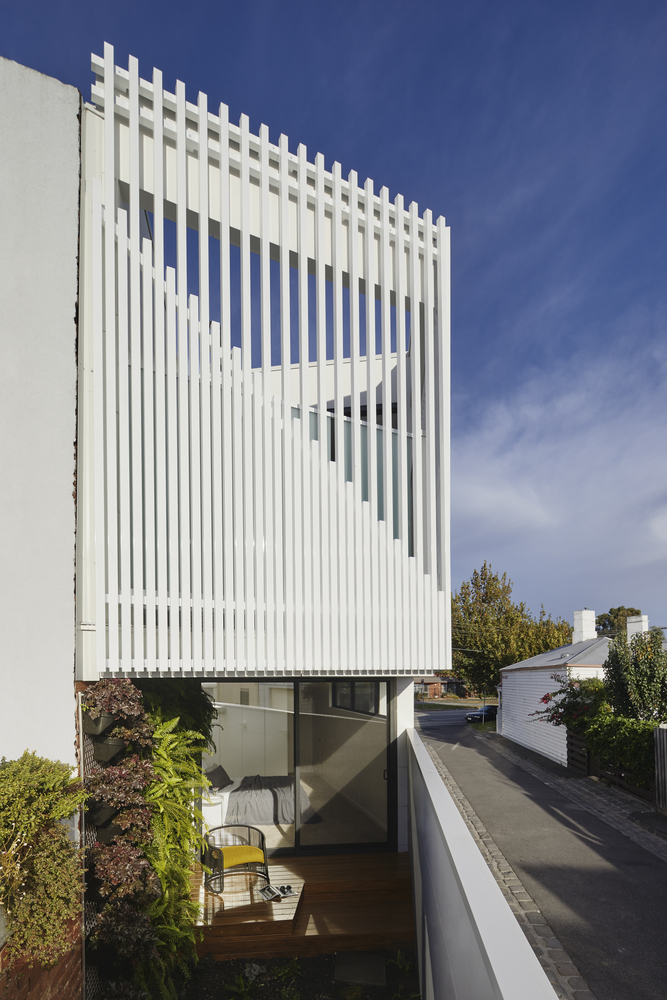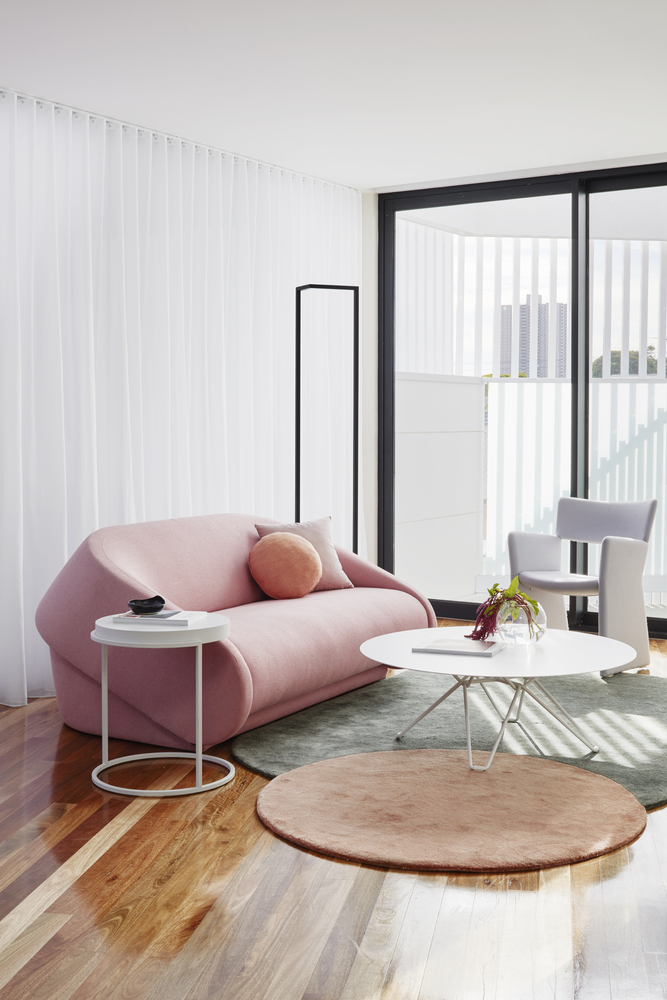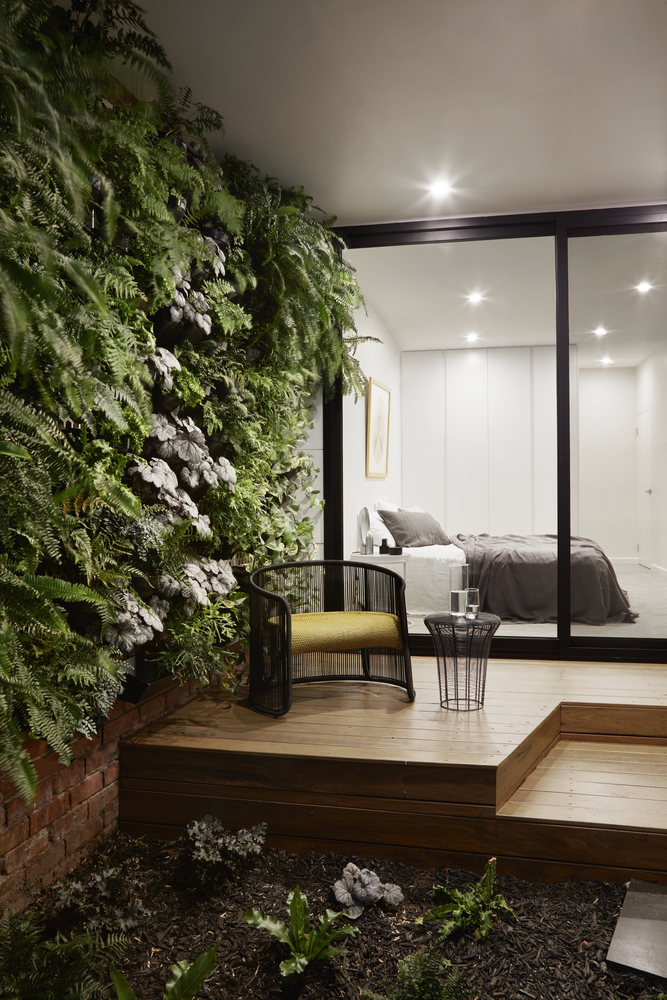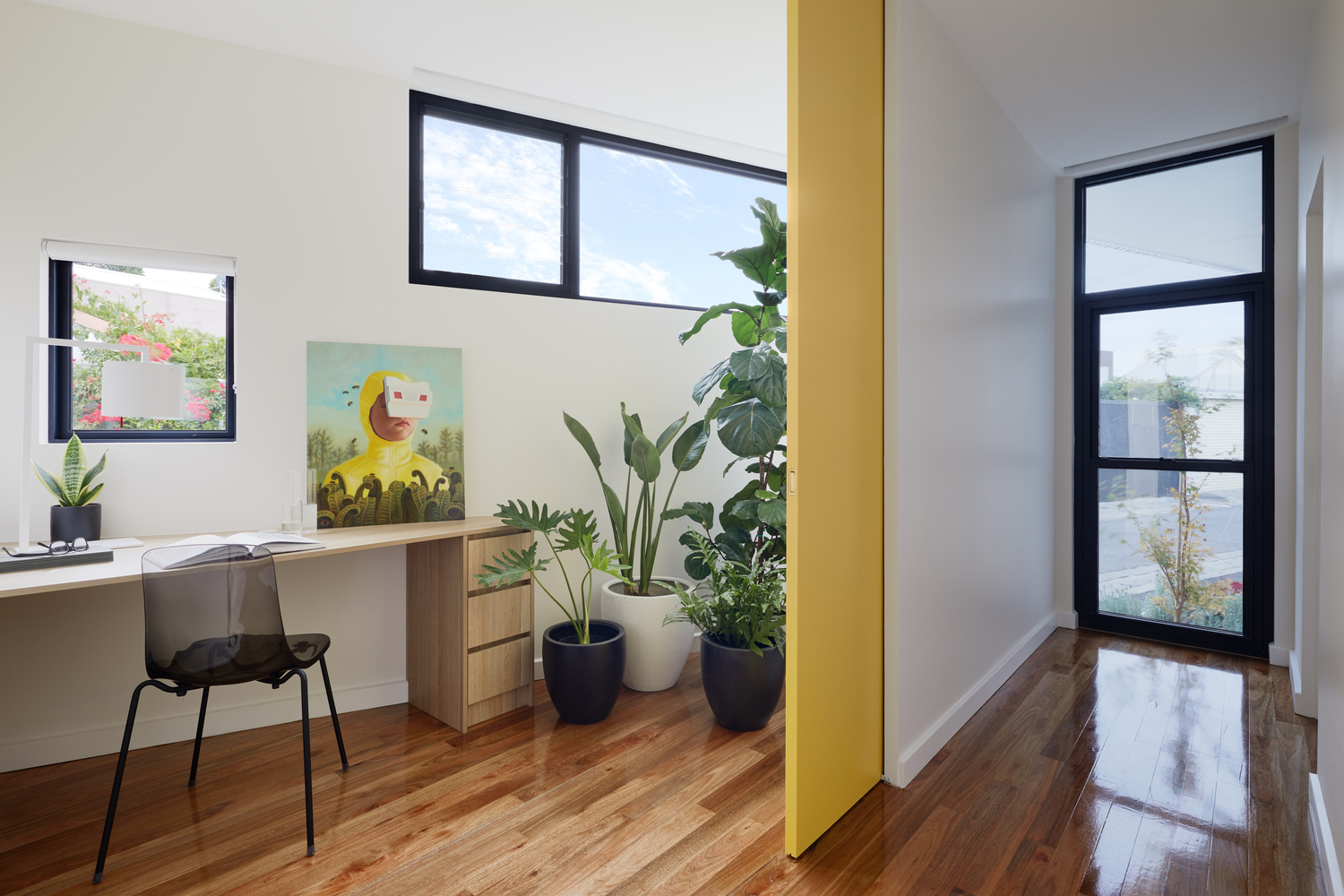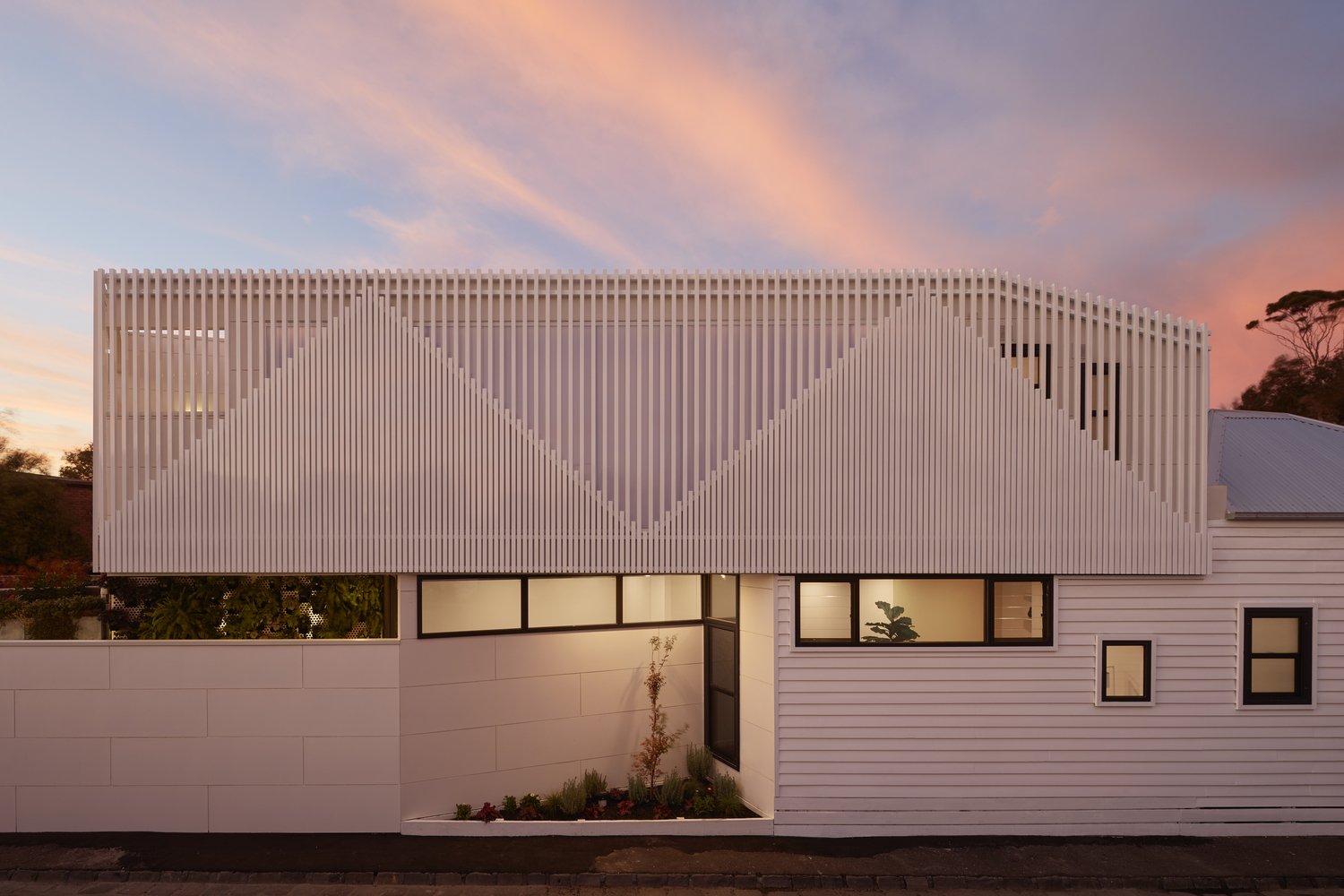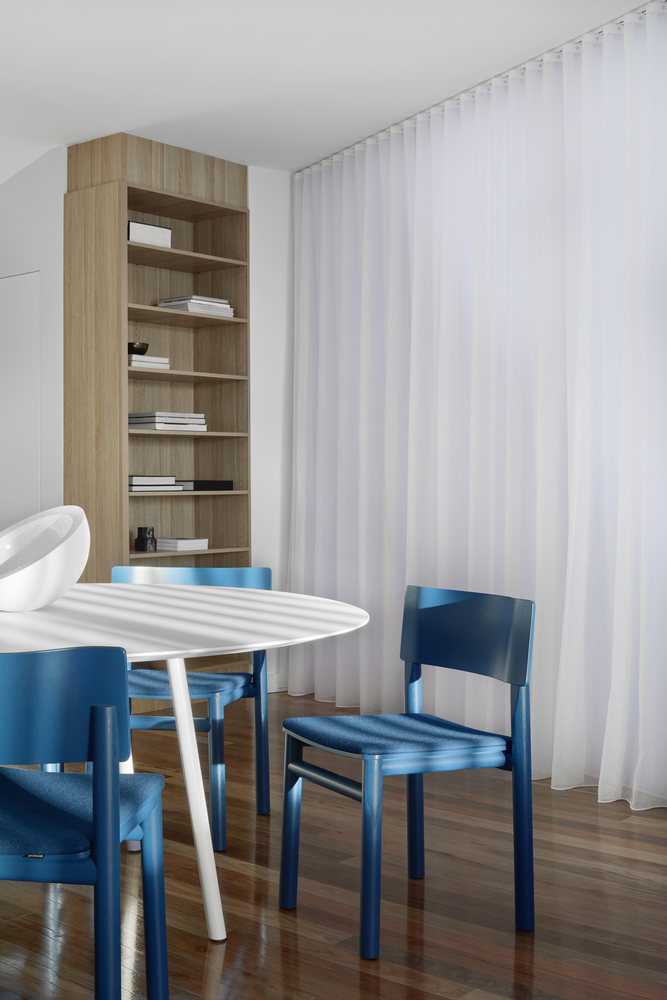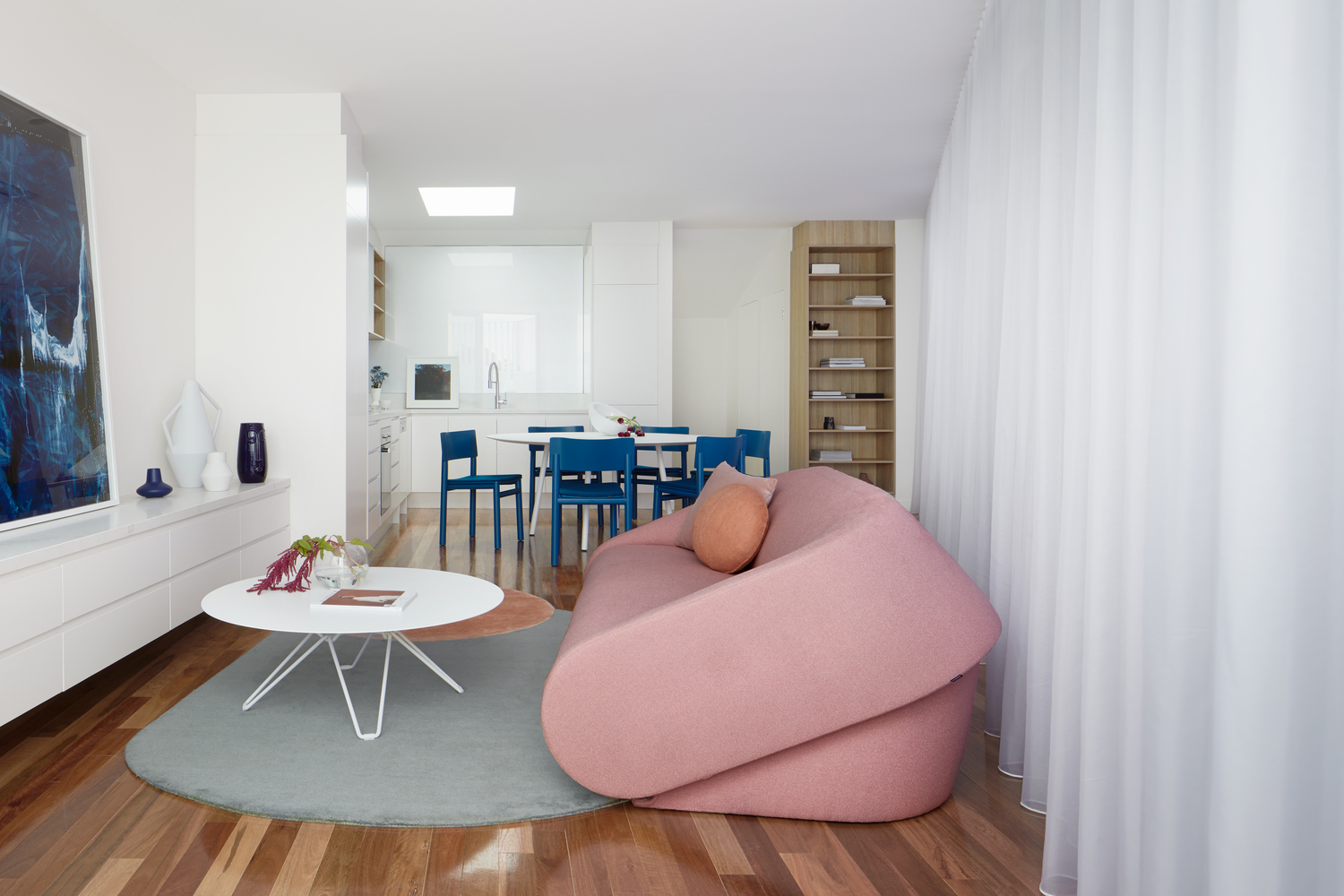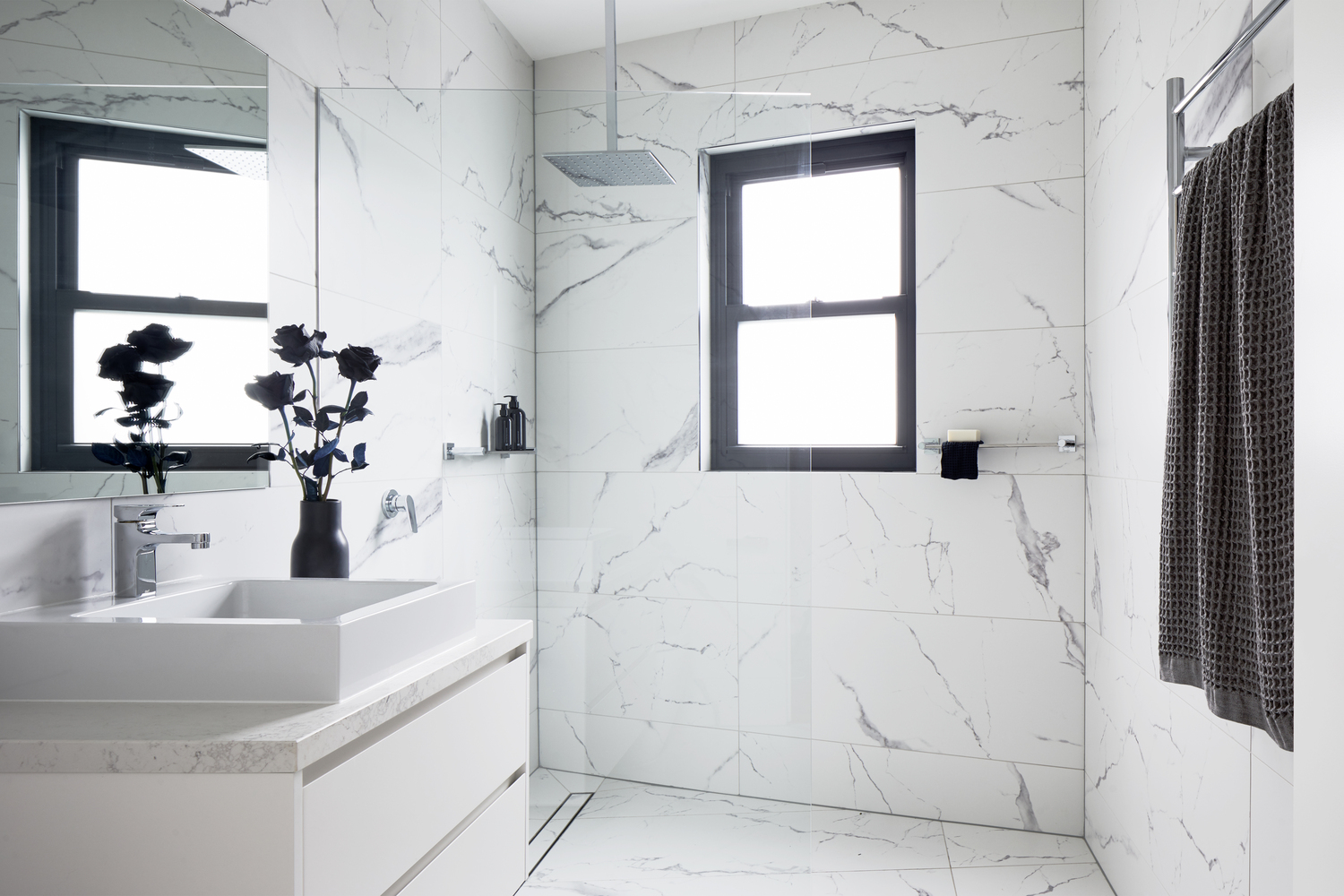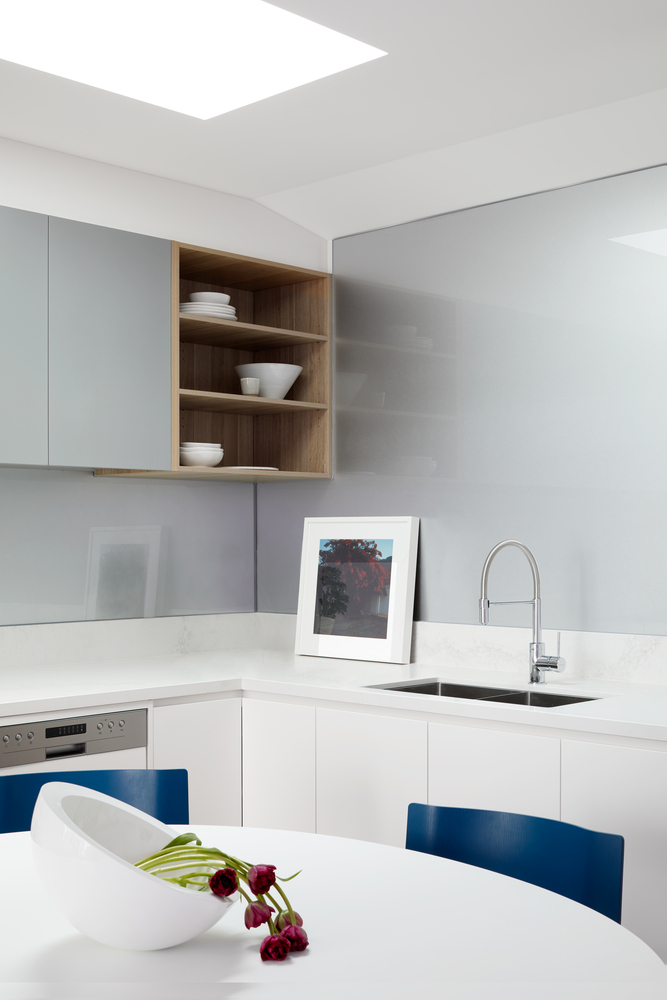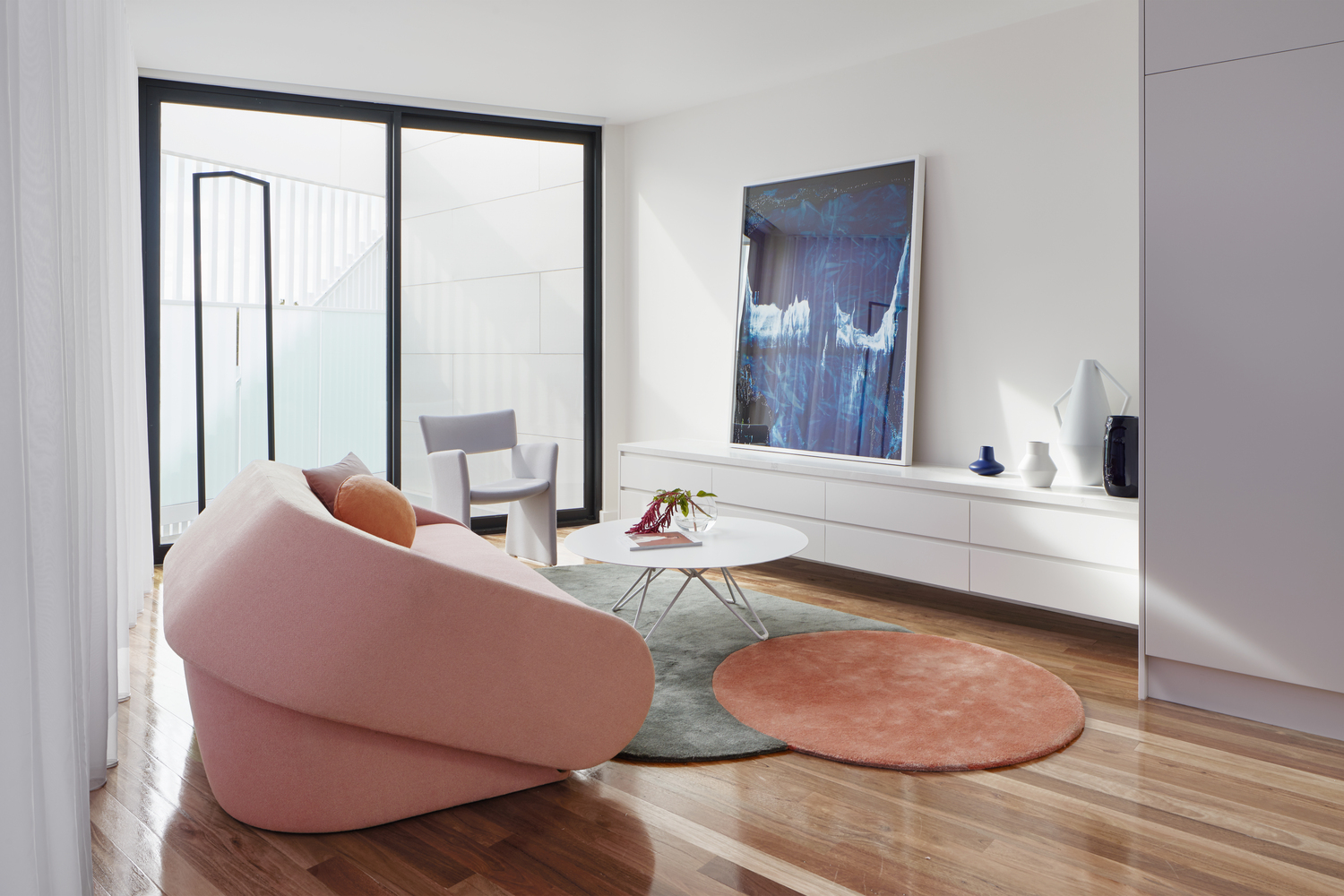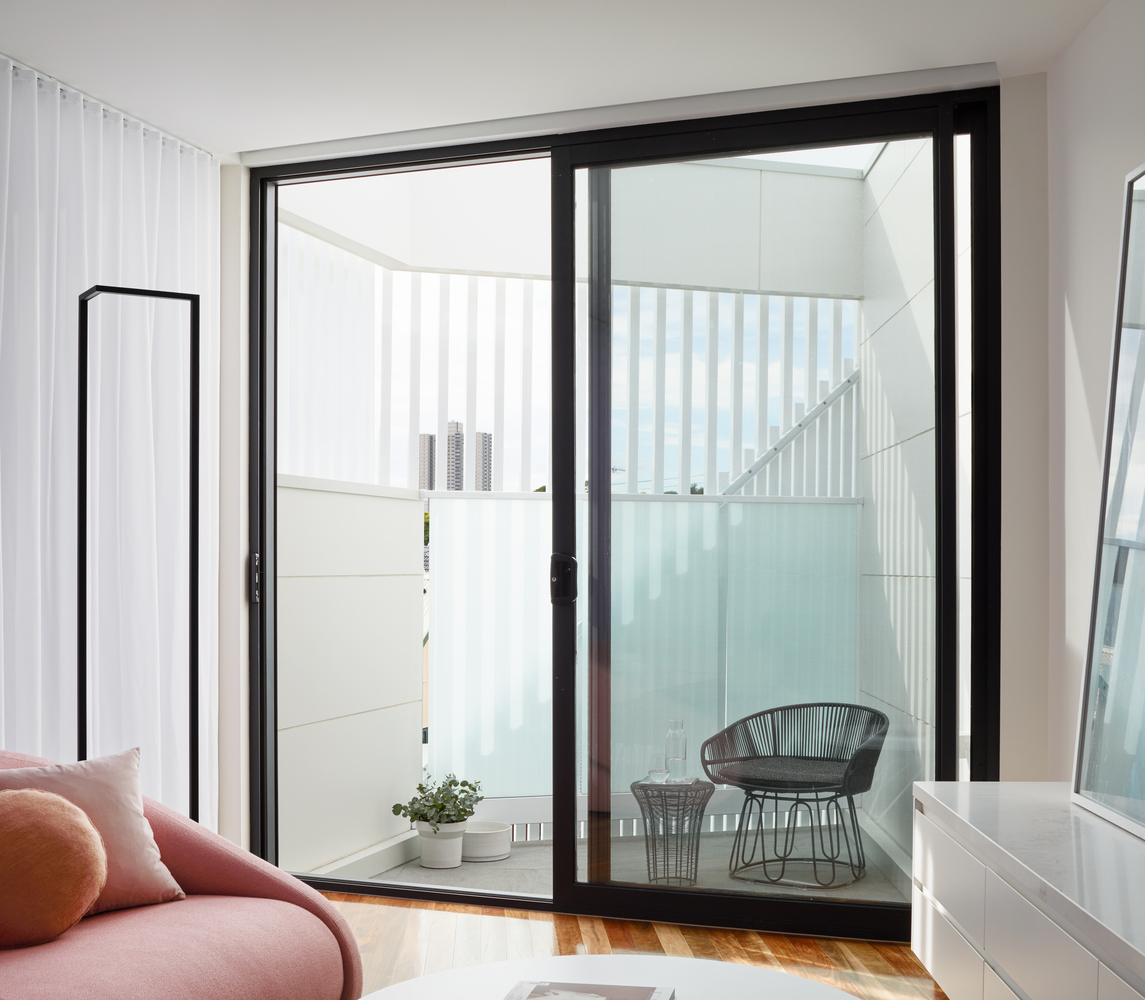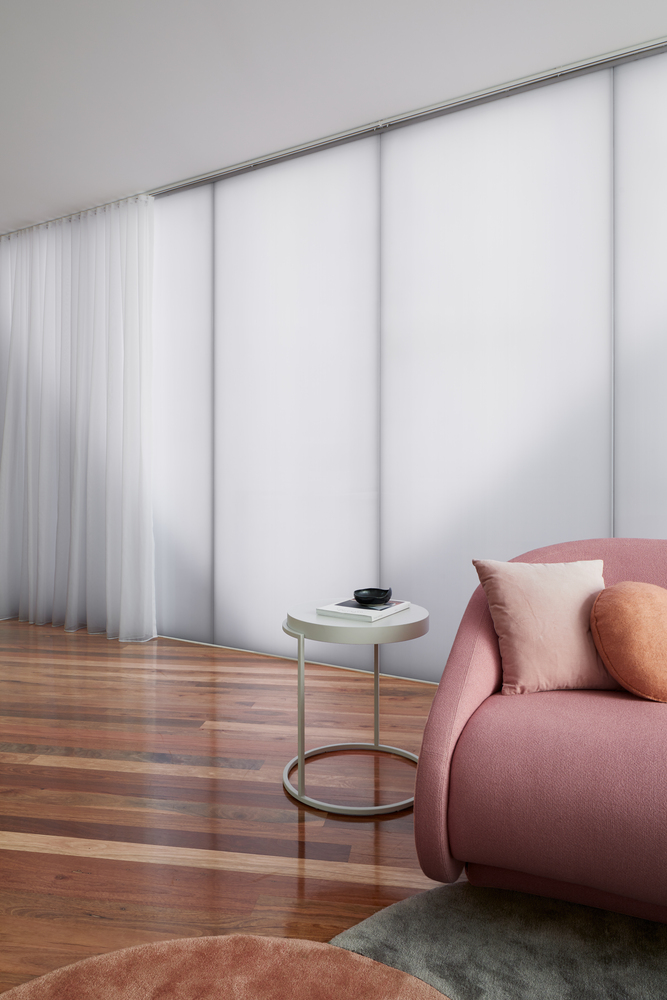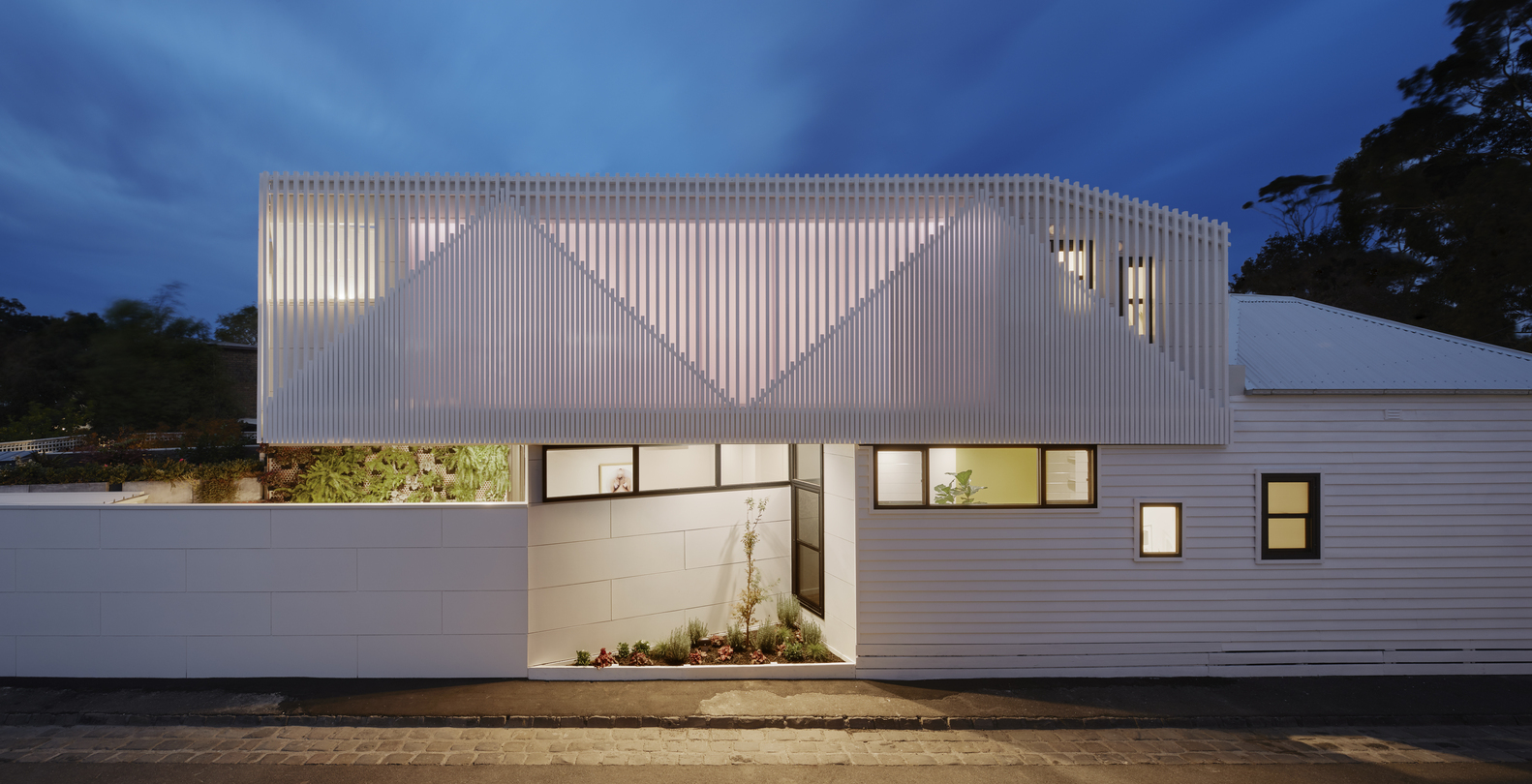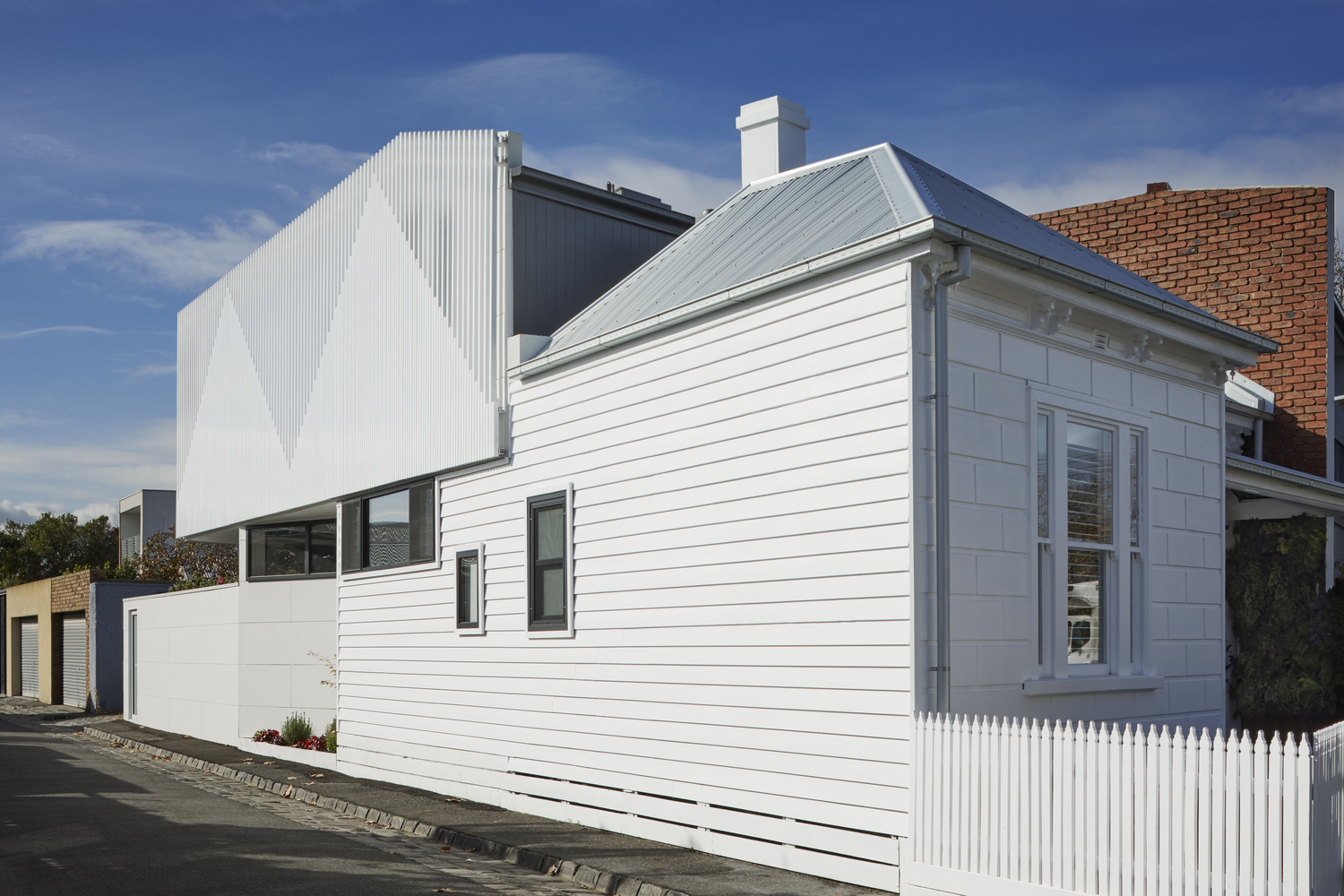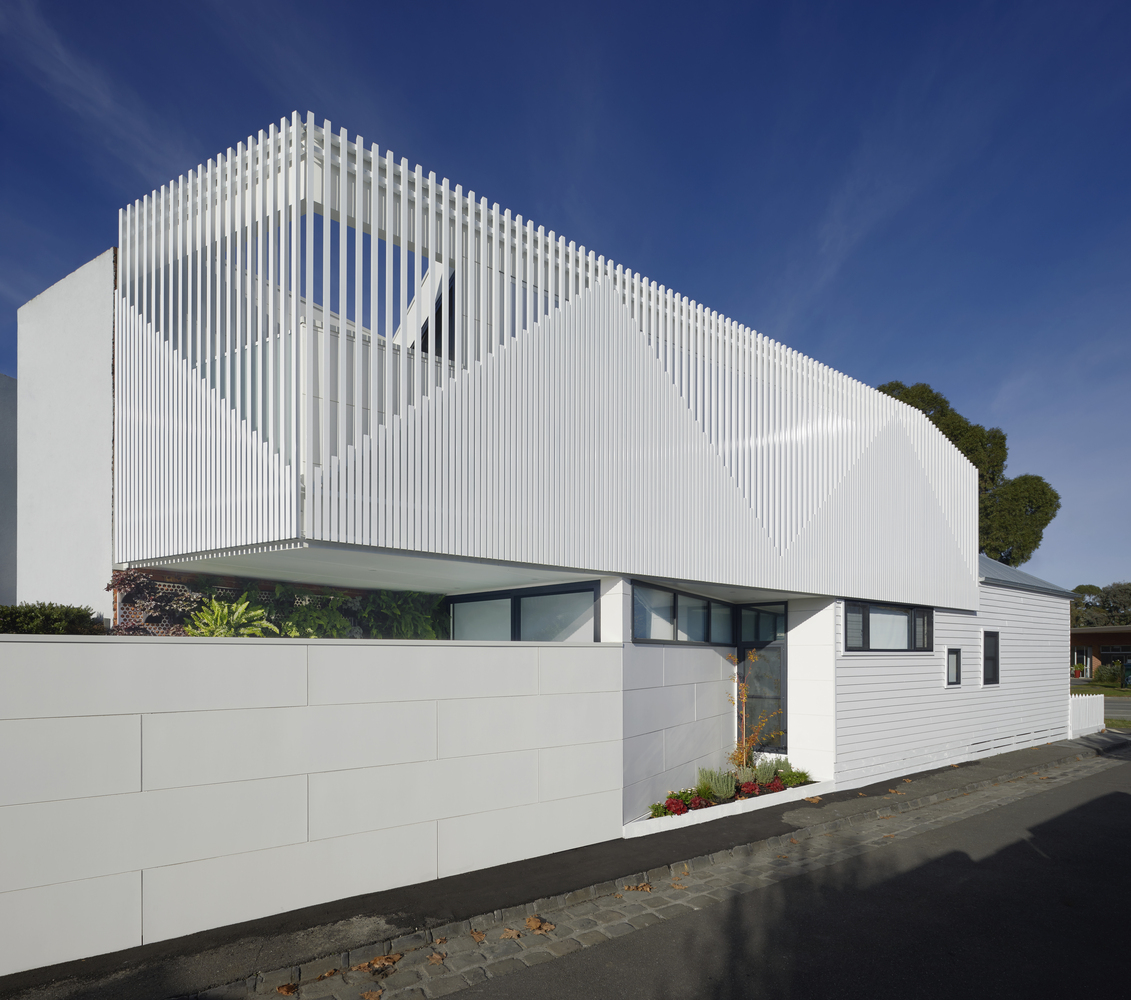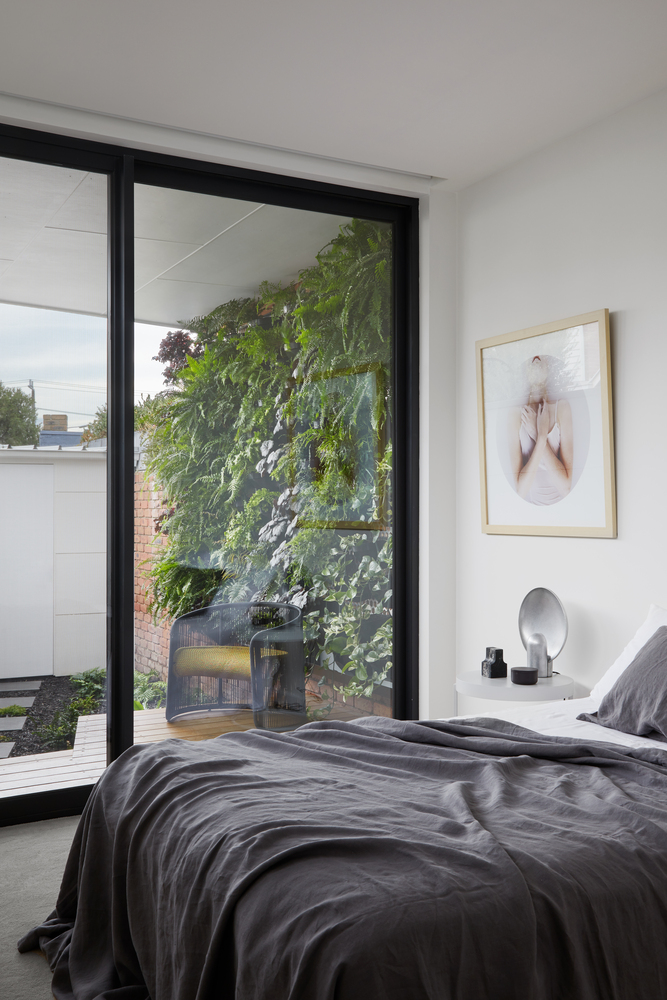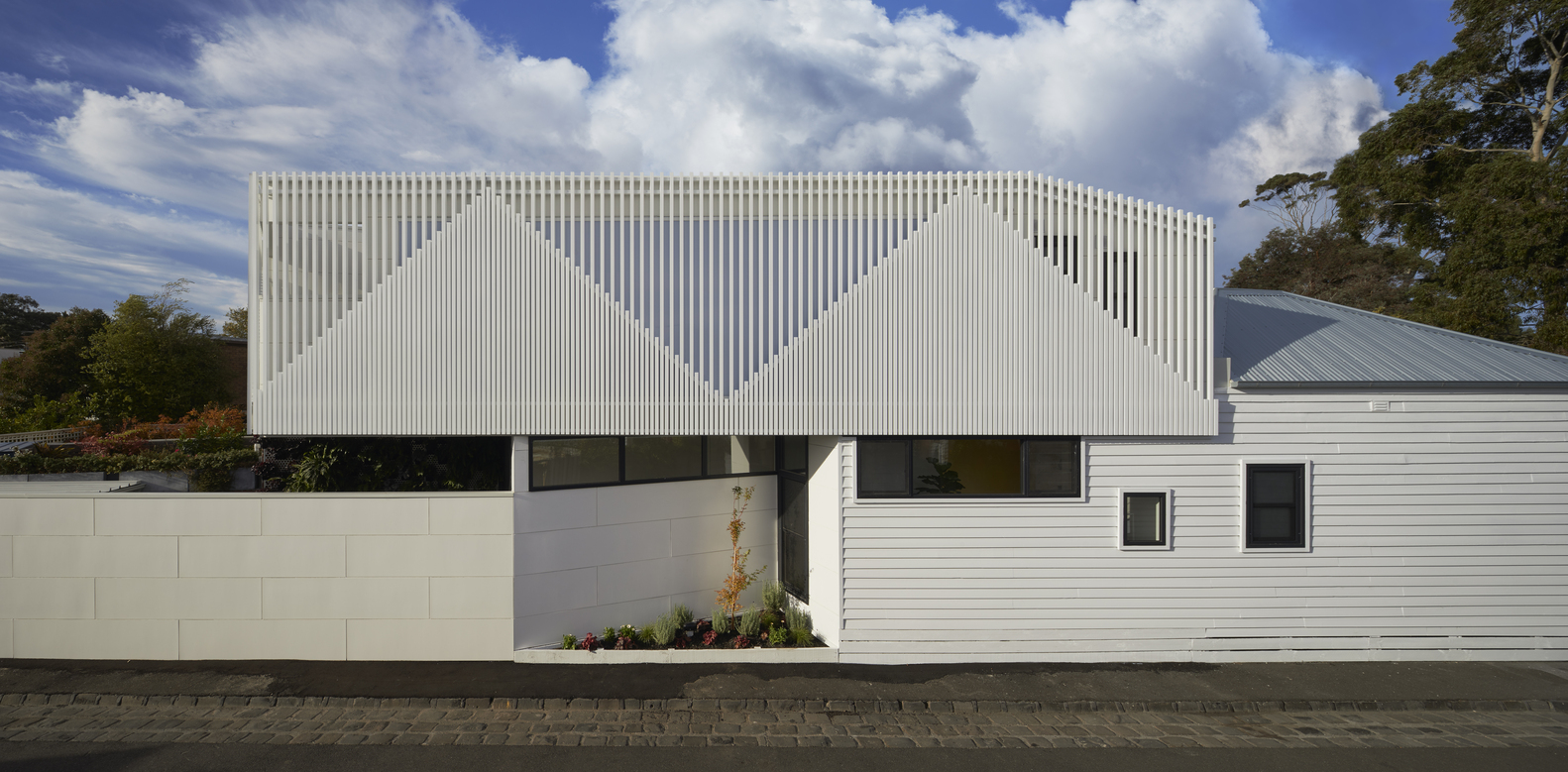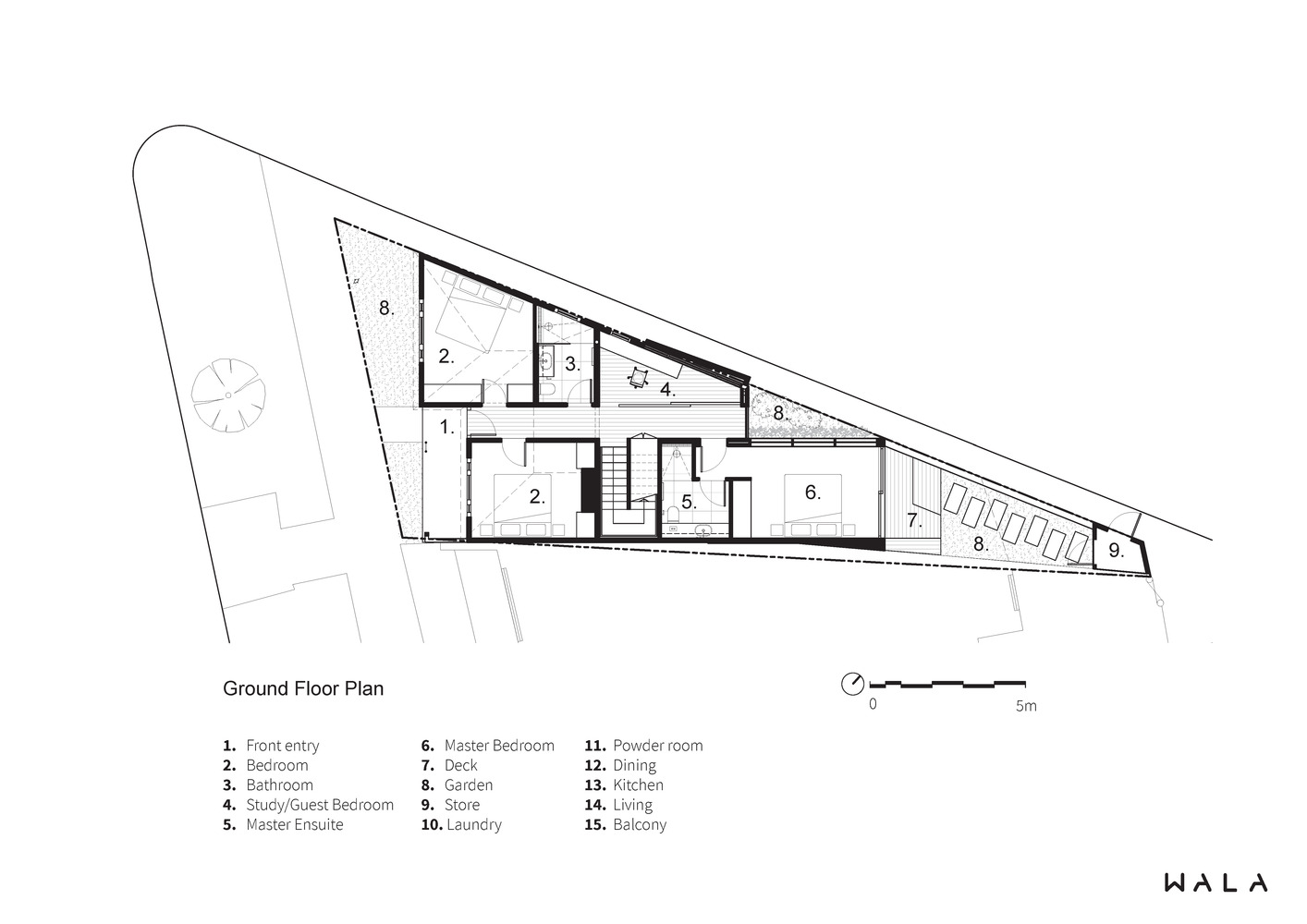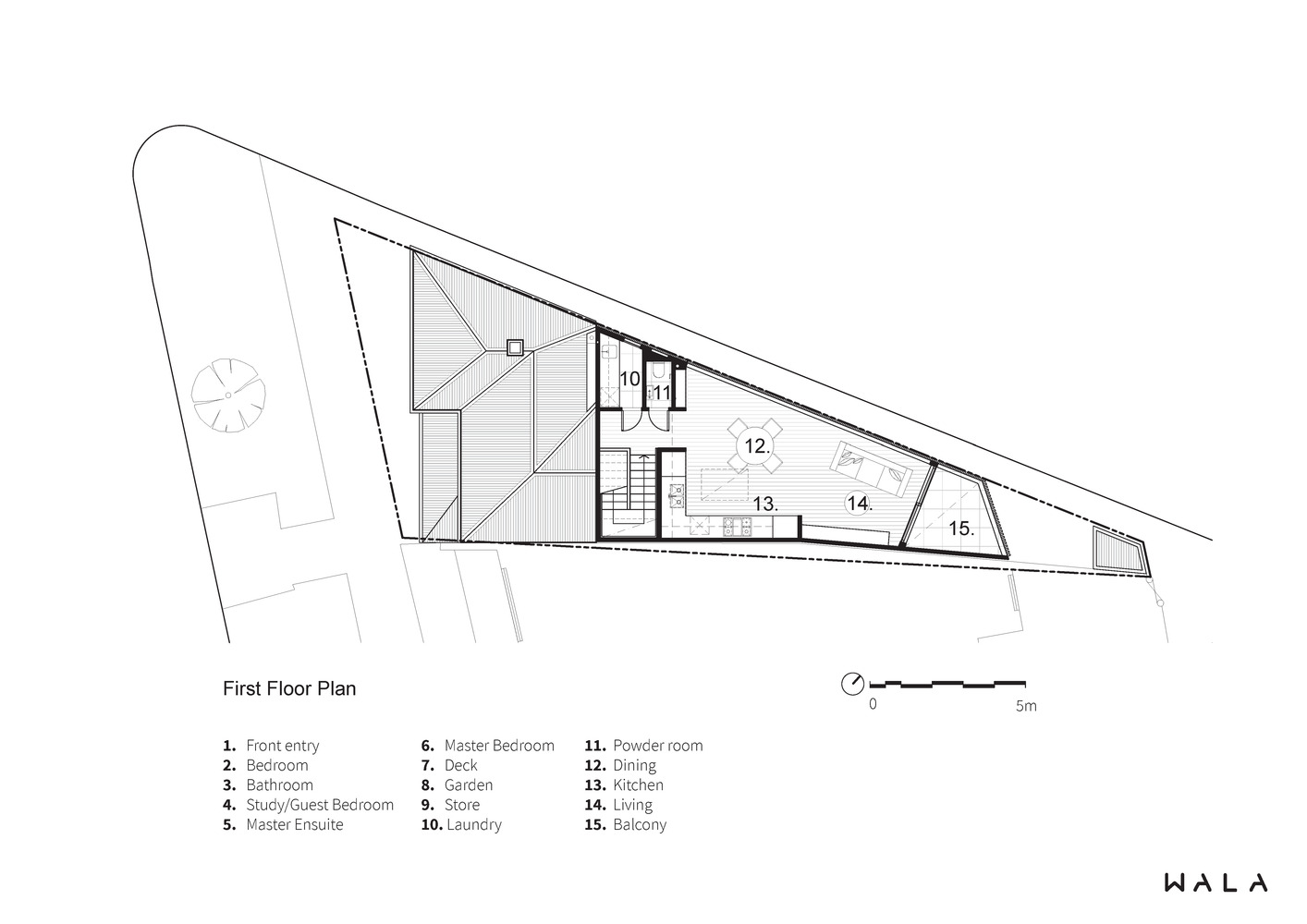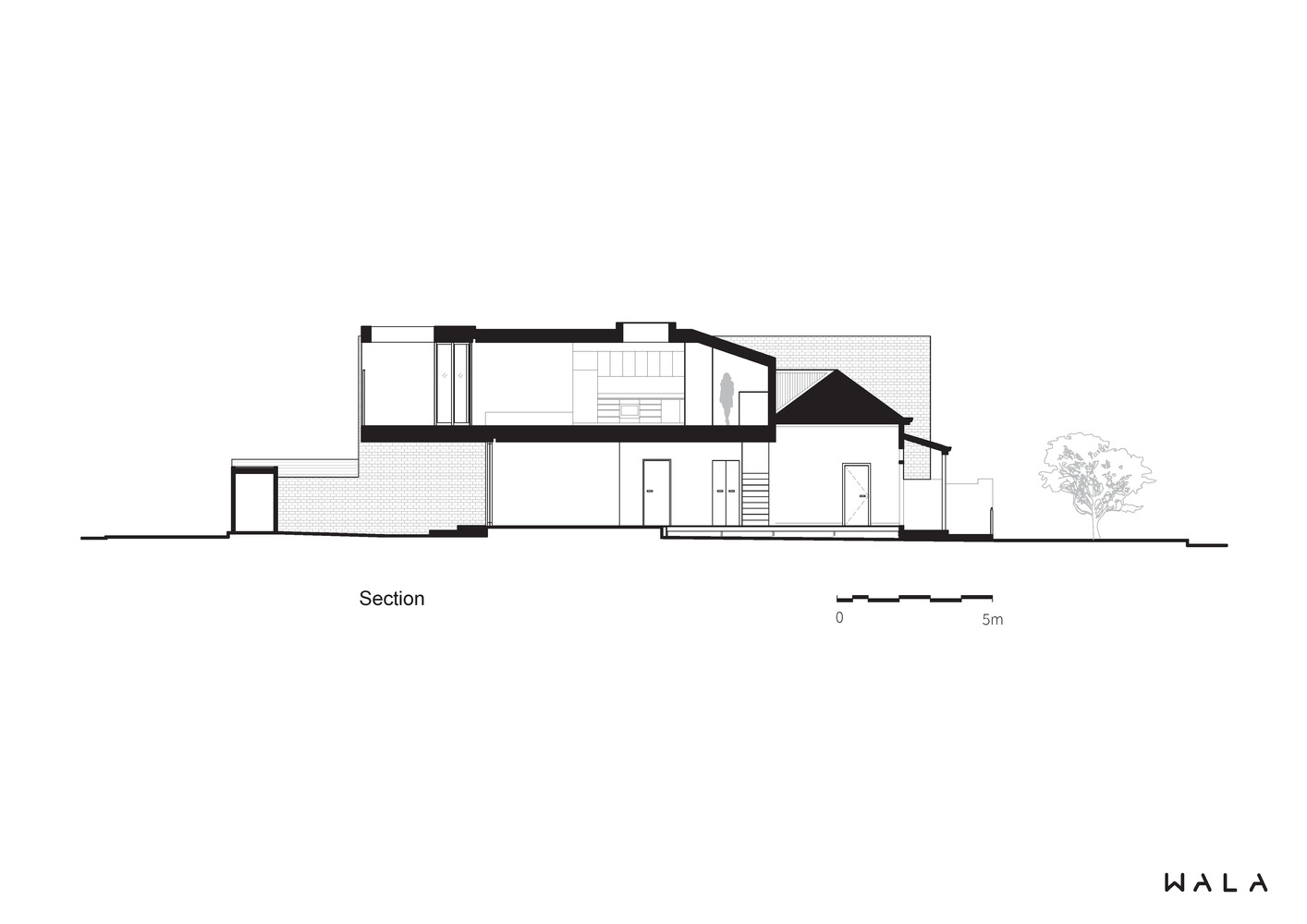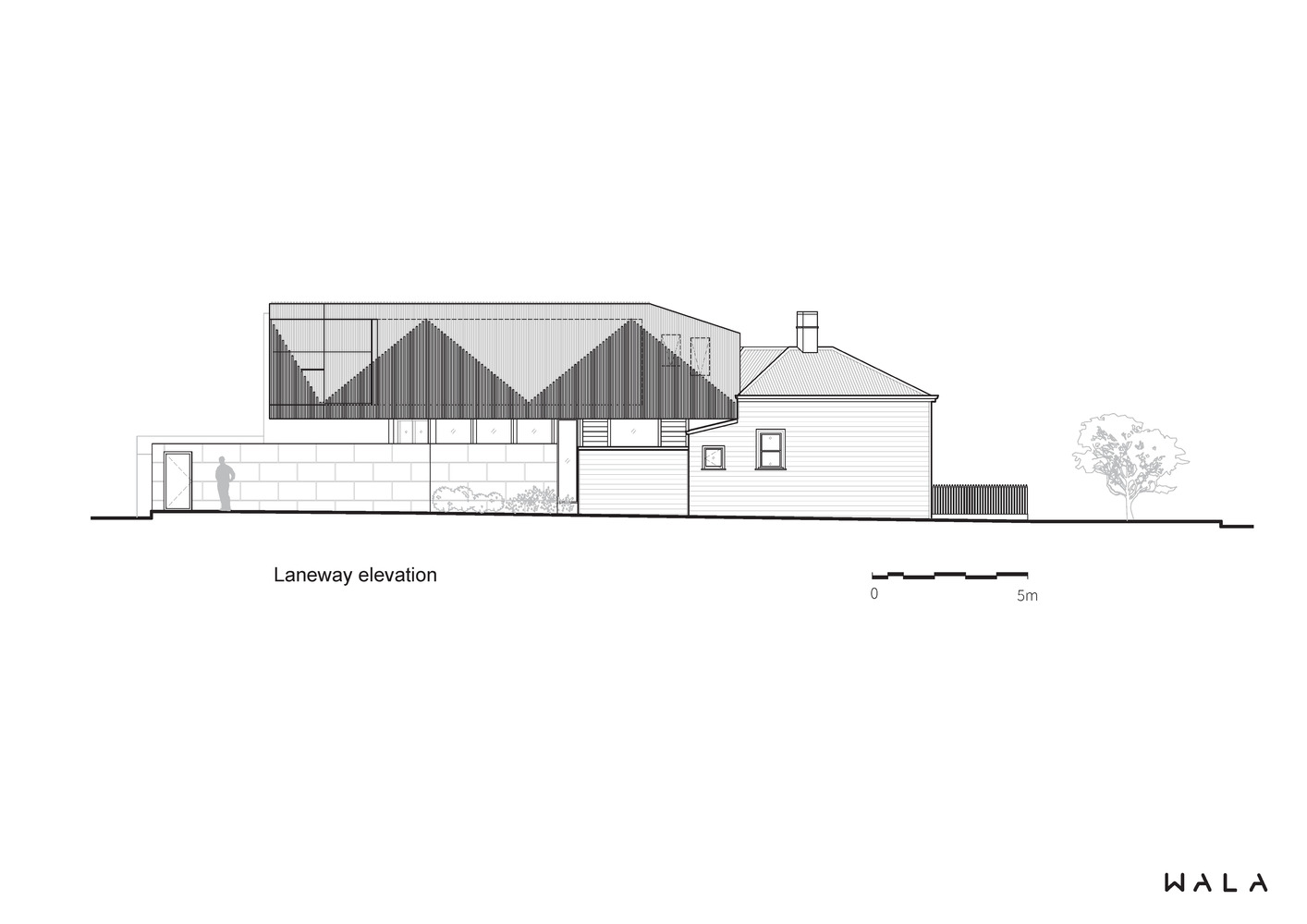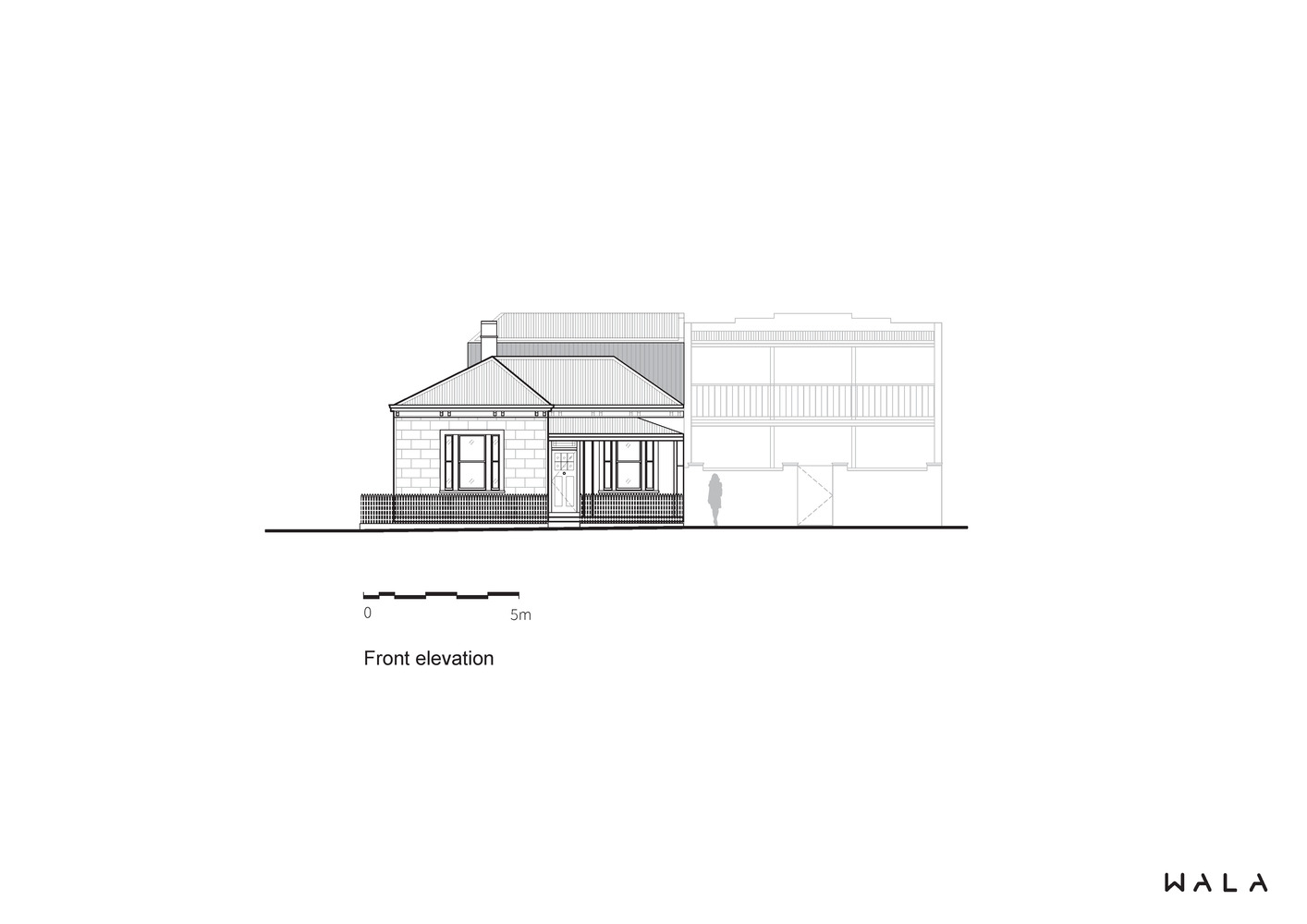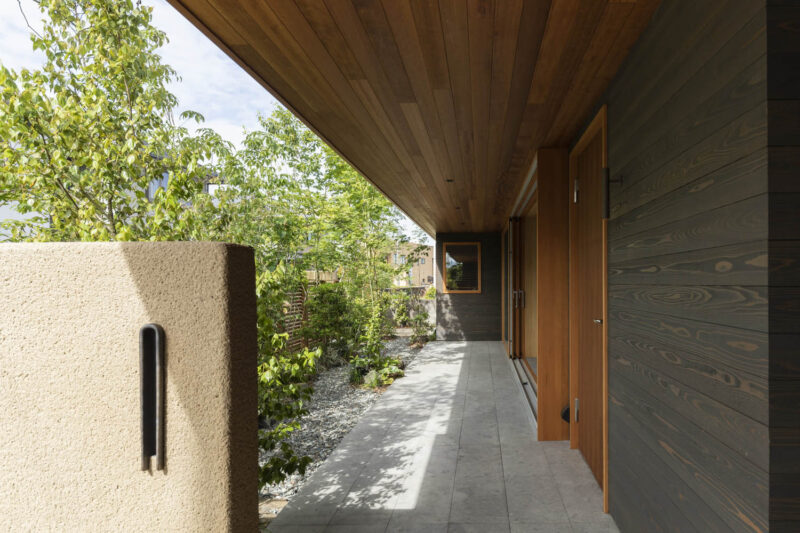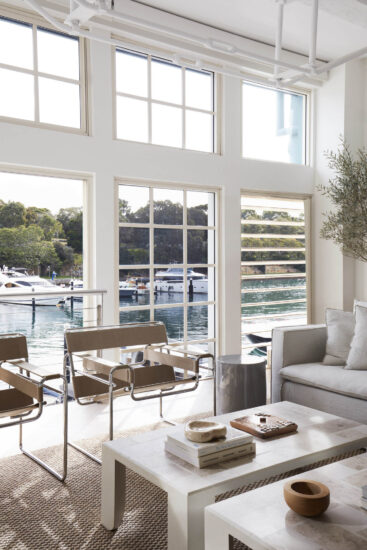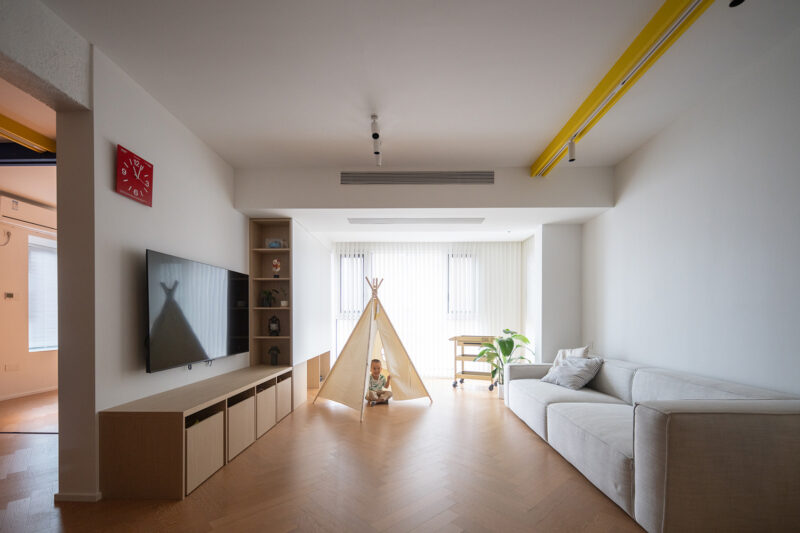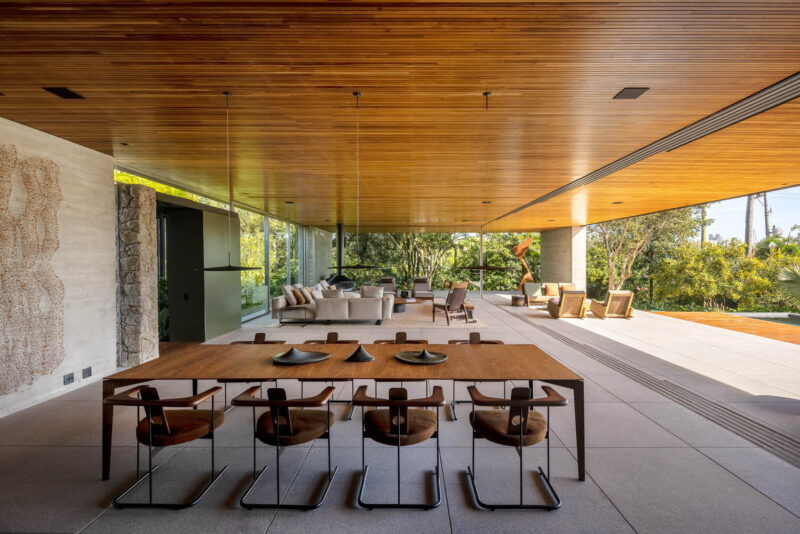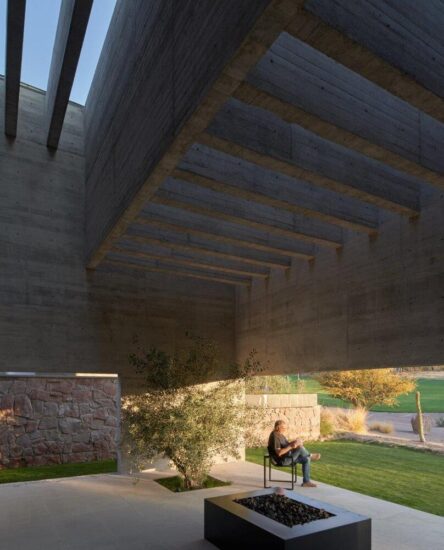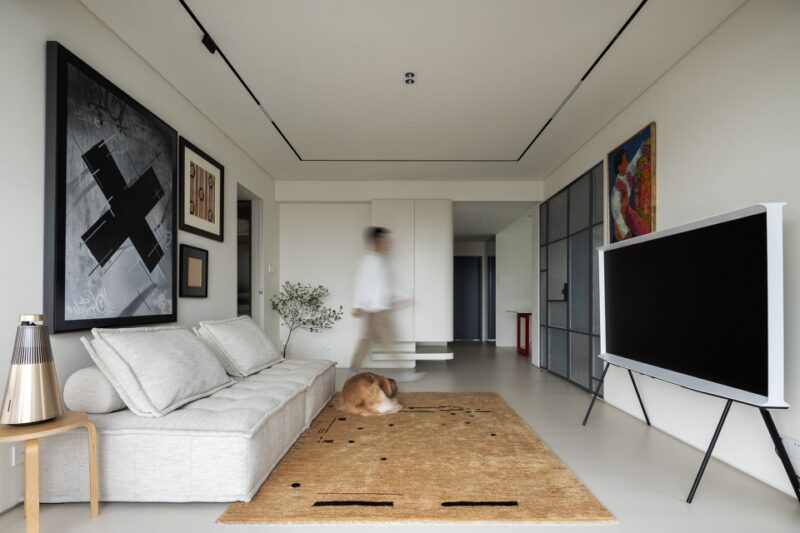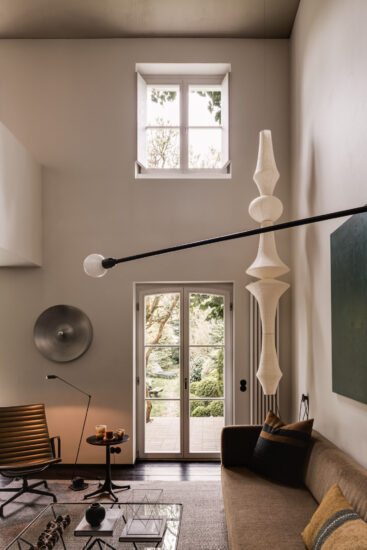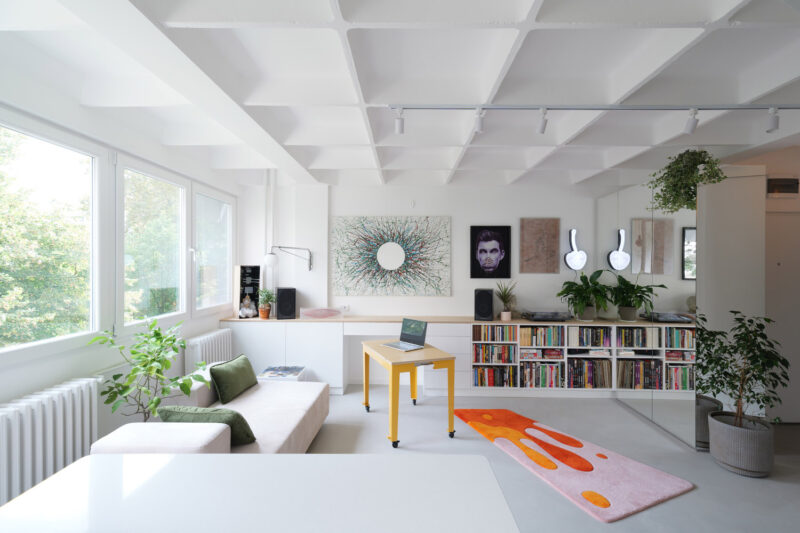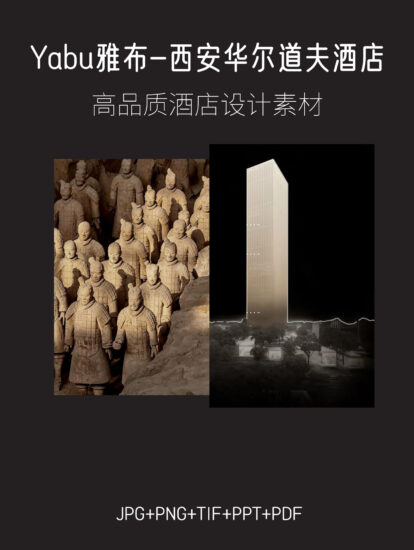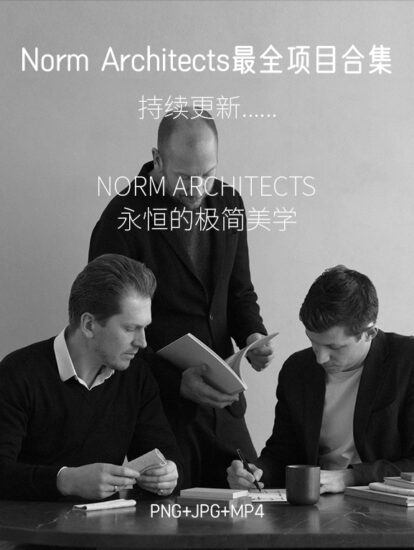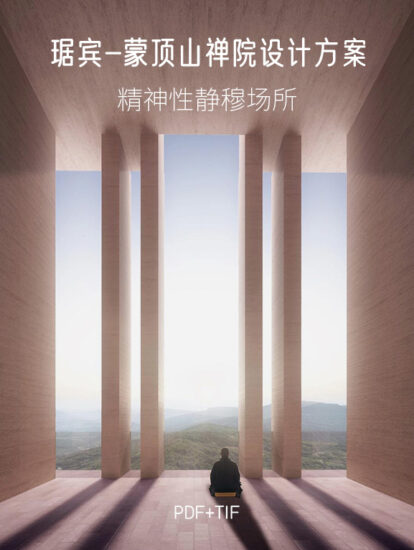原始建築坐落在一個多元化的住宅區,是一幢破舊的維多利亞式雙正麵住宅,南麵有一幢兩層高的露台住宅。這座房子位於角落,被主要街道和一條巷道夾住,使其呈三角形,朝向後方房子空間逐漸變窄。作為一座列入遺產名錄的建築物,我們必須搶救那棟年久失修的房子。
Nestled in a diverse residential neighbourhood, the original building was a dilapidated double-fronted Victorian house book-ended by a double-storey terrace house on its south side. The house is located on a corner allotment, pinched in by the main street and a laneway which gives it its triangular shape that tapers towards the rear. As a heritage listed building, it was imperative to rescue the front of house which was in a severe state of disrepair.
房主要求住宅要有三個臥室,同時利用鄰居的雙層高度邊界牆在住宅後方建了第二層樓。
The homeowner presented us a brief that requested a 3-bedroom family home whilst making use of the neighbour’s double-height boundary wall to introduce a second story volume to the rear of the property.
與原住宅曲折昏暗的布局形成對比的是,新擴建部分采光良好,空間寬敞 ,並與前麵的傳統建築無縫結合。
In contrast to the convoluted and dimly-lit layout of the original house, the new extension had to be well-lit, adopt a spacious feel, and combine seamlessly with the front heritage building.
房屋最初的後方空間布局淩亂,雜亂地聚集在一起,所以我們的目標是保留和恢複現有的房屋前部,同時改善整個房屋的流動和功能。我們通過提高樓上的起居空間和在一層布置所有的臥室,顛覆了典型的一層擴建的現狀。這使得臥室能夠通過麵對巷道的新邊界牆來獲得固有的隱私和安全。在樓上,起居空間現在位於鄰近屋頂的上方,麵向不間斷的城市景觀和燈光。
The original rear spaces were messy in their layout and clustered haphazardly, so our goal was to retain and restore the existing front of house whilst improving the flow and functionality of the overall house. We subverted the status quo of a typical “ground level extension” by promoting the living spaces upstairs and organizing all bedrooms at ground level. This enabled the bedrooms to borrow inherent privacy and security afforded by a new boundary wall facing the laneway. Upstairs, the living spaces now sit above the neighbouring roofline and open towards uninterrupted city views and light.
新的現代建築外觀通過參考上層外部板條屏風上的三角形狀,彰顯了維多利亞時代的傳統斜屋頂。該屏風不僅為巷道呈現了清晰的外部造型,也可以屏蔽鄰居花園的景觀來保護隱私。在樓上起居空間的內表麵,一麵通高的PC材料牆仍然允許光線進入房間。在白天,柔和的日光照亮了開闊的生活空間,當太陽落山時,這些空間就變成了夜空下的燈籠。
The new contemporary facade celebrates classic pitched roofs of old Victorians in the neighbour hood by referencing these triangular shapes in the upper floor’s external batten screen.This screen not only presents a clear external graphic to the laneway, but also protects privacy by shielding views into the neighbours’ gardens. A full-height polycarbonate wall on the internal face of the upstairs living spaces still allows for light into the rooms. During the day, soft daylight illuminates the elevated living spaces and when the sun sets, these spaces become lanterns under the night sky.
新添加的窗戶和玻璃滑塊,是用鋁框起來的,與舊房子的雙木框窗戶形成對比。在擴展這種材料的選擇,板條防護網由鋁型材擠壓而成,這與手工鋪設的舊天氣板覆層形成了奇妙的對比。
New insertions such as windows and glazed sliders are framed in aluminium to contrast against the double-sash, timber-framed windows of the old house. In extending this choice of material, the batten privacy screen comprises aluminium extrusions to achieve a machine-grade uniformity that juxtaposes wonderfully against the hand-laid weatherboard cladding of old.
采用強烈的“白色”調來提升房屋的視覺衝擊力。我們沒有屈服於用傳統窗戶為點綴的實心牆,而是設計了這個半透明的牆,它實際上是一個“光之牆”,可以將日光均勻地灑在到主要的生活區。
A strong color palette of ‘whites’ was employed to elevate the visual impact the house. Rather than succumbing to a traditional solid wall punctuated with windows, we designed this translucent wall to literally be a “wall of light” and emanate diffused daylight uniformly into the main living zones.
不規則的場地也允許我們在街道上設計一個“共享花園”,脫離了沿巷道的冷酷環境,這一點可以從該地區的其他角落情況明顯看出。花園通過將新的邊界圍欄傾斜到房子的方向,形成一個人性化的景觀。盡管房子占地麵積很小,但這一努力是為了確保房子的一部分可以與社區共享。
The irregularly-shaped site also allowed us to introduce a “shared garden” at street level; a departure from the harsh treatment along the laneway as evident by other corner allotments in the area. The garden was achieved by angling the new boundary fence towards the house to carve out a landscaped feature at a human scale. Despite the house’s small footprint, this effort was made to ensure that a part of the house could be shared with the community.
Downside Up House最終是一個以小占地麵積設計“大型家居功能”的項目。這座房子顛覆了傳統典型的“地麵延伸”方法,同時又不影響光線,空間和生活質量。
Downside Up House is ultimately an exercise in designing “big home features” on a small footprint. The house subverts the typical “ground level extension” approach without compromising light, space and quality of living.
完整項目信息
項目名稱:Downside Up House
項目位置:澳大利亞
項目類型:住宅空間/住宅改造
完成時間:2018
項目麵積:142平方米
使用材料:玻璃、鋁、PC材料
建築設計師:WALA
攝影:Tatjana Plitt


